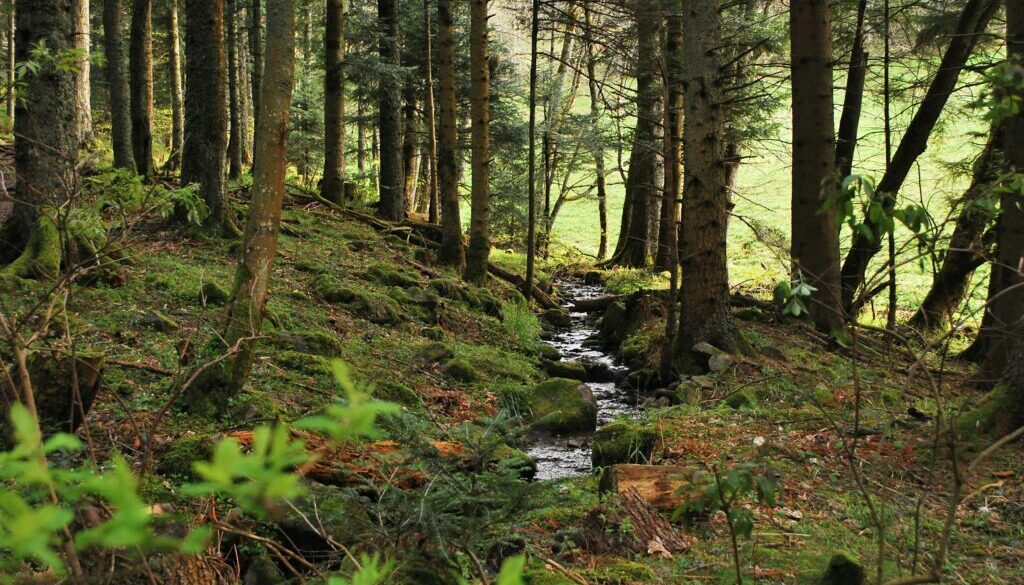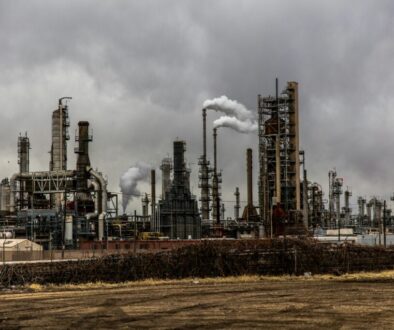Rain-fed streams lacking federal protections are vital for water quality, study finds
New data supports environmental advocates’ long-held position that small, rain-fed streams make major contributions to water quality in rivers and lakes across the US.
So-called “ephemeral streams,” which only flow after precipitation falls and are not currently protected under the Clean Water Act, contribute more than half of the water discharged from US regional rivers, according to the study, which published on Thursday in the journal Science. These streams are likely a major pathway for downstream water pollution, the study concluded.
The findings back concerns that a 2023 US Supreme Court decision in the case titled Sackett v. Environmental Protection Agency (EPA) may put many US waterways and communities living downstream at risk of exposure to pollutants. The ruling effectively removed federal protections for ephemeral streams and wetlands, narrowly defining “waters of the United States” as “relatively permanent, standing or continuously flowing bodies of water.”
The study provides “some scientific confirmation that pollution would flow significantly downstream from these smaller waterways,” said John Rumpler, clean water director and senior attorney for the organization Environment America.
“That’s a really important finding,” he said. “If polluters are allowed to dump into ephemeral streams with impunity and there’s no federal recourse, then downstream water quality can be dramatically impacted.”
The Supreme Court’s move to limit the Clean Water Act has been met with alarm by environmentalists and sharp criticism from the Biden administration, with President Joe Biden saying in a statement last May that it “upends the legal framework that has protected America’s waters for decades.”
A 2022 brief filed in the Supreme Court by 45 senators and 154 House members expressed support for more limited federal control in the Clean Water Act, siding with petitioners in the then-pending Sackett v. EPA case.
In the case, an Idaho couple, Chantell and Michael Sackett, sued the EPA in 2007 for ordering that they restore a wetland site where they were preparing to build a home. They claimed that since the wetland was not superficially connected to other bodies of water it did not fall under the definition of “waters of the United States” over which the Clean Water Act gives federal regulators authority.
The American Farm Bureau Federation and state farm groups sided with the Sacketts, claiming that the definition of “waters of the US” unfairly saddled farmers with requirements for lengthy, costly permits and made them vulnerable to fines and criminal punishment.
Ultimately, the Supreme Court’s decision in the case redefined which bodies of water the federal government has the authority to regulate, excluding waterways that do not flow continuously.
Since the Sackett v. EPA ruling, nine states have moved to strengthen clean water protections or to create state permitting programs, with most emphasizing protections for wetlands, according to the Clean Water for All Coalition. Six states have moved to roll back water protections.
Small streams, huge impact
Prior to the new analysis, there was very little research specifically focused on ephemeral streams, and the extent to which these types of streams influence downstream water quality was not known, according to the study.
The researchers modeled how much water these “ephemeral streams” contribute to more than 20 million US rivers, lakes, and reservoirs and validated the results with more than 7,000 on-site assessments. They concluded that ephemeral streams contribute 55% of the water that flows out of regional river systems, on average.
While these rain-dependent streams play a stronger role west of the Mississippi River, they make consistently high contributions to river basins across the contiguous US and play a larger role on the East Coast than the researchers expected to find, according to a press release.
“Much of the pollution that enters river networks from ephemeral and intermittent streams will end up flowing into larger rivers that are unambiguously protected by the Clean Water Act,” said Nathan Tomczyk, a research associate at New Mexico Highlands University who was not involved in the study. “Because of this, there is a significant challenge to protect water quality in larger rivers when the majority of the water therein is not protected at the source.”
Many US public drinking water systems rely on ephemeral streams and other small or inconsistently-flowing bodies of water, according to a 2009 EPA analysis. The study determined that over 117 million people in the US get their water from public drinking water systems that rely on ephemeral streams, “intermittent streams” that hold water during wet times of the year, or “headwater streams” that make up the smallest parts of a river network.
Over 75% of streams in Kansas, Missouri, Montana, North Dakota, Nebraska, South Dakota, Texas, Utah, and Wyoming are classified by the US Geological Survey as ephemeral or intermittent, as well as over 90% of streams in New Mexico and Nevada, according to the environmental group Earthjustice.
“Unquestionably, the Sackett decision creates a massive loophole for polluters,” said Rumpler. “[This study] underscores the importance of the states to ramp up their protections not only for wetlands but also for ephemeral streams. We hope that Congress will one day find the courage and political will to rectify this egregious wrong at the federal level, but at this point right now the ball is really in the court of the states, so to speak.”
(Featured image by Boudewijn Huysmans on Unsplash.)
 EWG
EWG


